Name Arnold Odermatt | ||
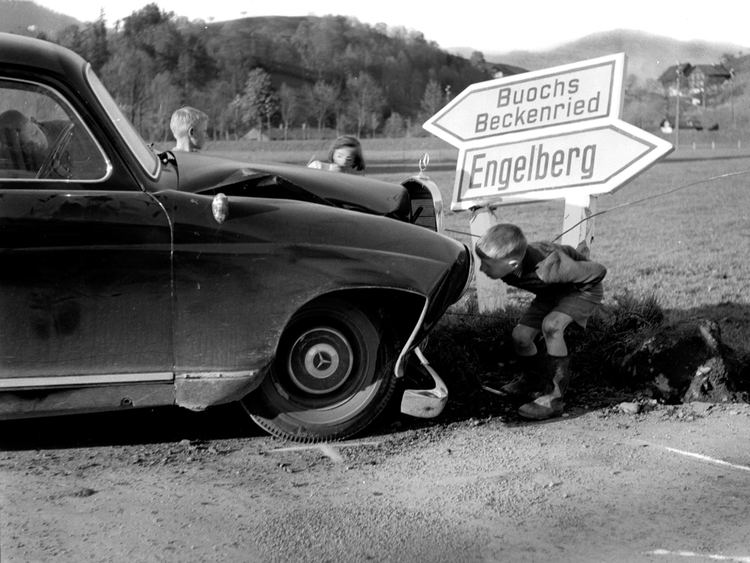 | ||
Arnold odermatt kulturreport
Arnold Odermatt (25 May 1925, Oberdorf, canton Nidwalden, Switzerland) is a celebrated Swiss police photographer whose work spanned more than 40 years. Originally trained as a baker, he was a photographer for the Nidwalden district police from 1948 until his retirement in 1990. He is best known for his eerily beautiful black-and-white photographs of the aftermaths of motor vehicle accidents. His photographs have earned him a great deal of respect on the art scene for a number of years. Arnold Odermatt joined the police in 1948 and rose to become a lieutenant, chief of the transport police and deputy chief inspector of the Nidwaldner District Police before he retired.
Contents
- Arnold odermatt kulturreport
- Crash Course The Accidental Art of Arnold Odermatt
- Biography
- Dr Matthias Winzen
- Klaus Honnef
- Urs Odermatt
- Individual exhibitions
- Group exhibitions
- Books
- Films
- References
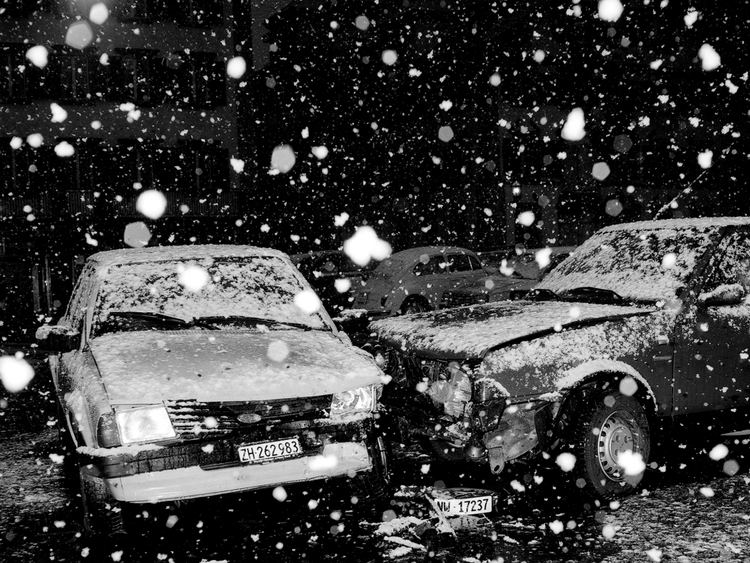
At the beginning of the 1990s, Arnold Odermatt’s photography was discovered by his son, Urs Odermatt during the research for his film Wachtmeister Zumbühl, and this work became a central theme in the film’s plot. Urs Odermatt brought his father’s works together in the working groups entitled Meine Welt, Karambolage, Im Dienst and In zivil and has published Arnold Odermatt‘s work ever since, working in collaboration with the Frankfurt art historian Dr Beate Kemfert and a gallery in Berlin – Galerie Springer & Winckler.
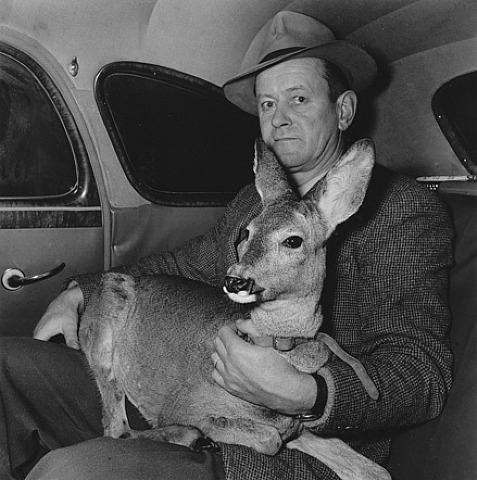
In 2001, Arnold Odermatt’s photography was selected by Harald Szeemann to be exhibited at the 49th Venice Biennale. In 2002 James Rondeau exhibited Odermatt’s work in its own right at the The Art Institute of Chicago, as did Urs Stahel at the Fotomuseum Winterthur in 2004.

Crash Course: The Accidental Art of Arnold Odermatt...
Biography
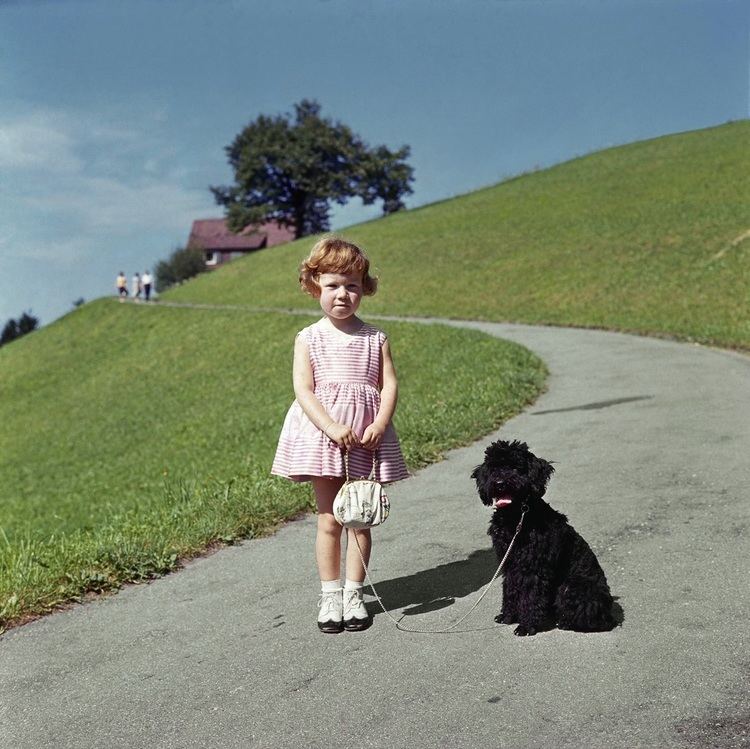
Arnold Odermatt the Nidwalden Police in 1948. He was forced to give up his original career as a bakery and pastry chef on health grounds. As the policeman Arnold Odermatt first appeared with his Rolleiflex at the scene of an accident – to provide photos to complement the police report, people found this rather disconcerting. At that time, photography was anything other than an independent means of providing the police with evidence.
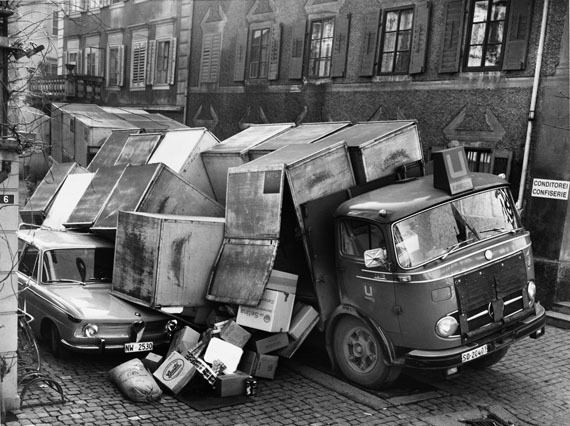
A colleague observed Arnold Odermatt as he took pictures for the force and was suspicious. He was ordered to report to his commander immediately. Odermatt managed to convince his superiors of the pioneering work he was doing. They allowed him to convert an old toilet in an observation post in Stans into a makeshift dark room. When the observation post was moved into another building several years later, Switzerland’s first police photographer was given his own laboratory.
Arnold Odermatt's biggest role model was the famous Magnum photographer Werner Bischof. He met him once by chance, as he was on security duty on the Bürgenstock and wanted to photograph Charlie Chaplin. Odermatt's own style was characterised by sobriety and authenticity. The spartan linguistic expression of his police reports can also be found in Odermatt’s images. His craftsmanship is beyond question, nothing of note is missed by his photographic eye. In KARAMBOLAGE, his most famous series of work, you can’t see the maimed victims but you do see the ethereal, surreal sculptures of scrap metal. With the softness and melancholy of Jacques Tati, he looks at the consequences of speed and the hectic nature of modern times.
For 40 years, Arnold Odermatt captured the daily work of the Nidwalden police force. It was only rarely that the local press, the court or an insurance company were interested in his photos. It was only when his son, the film and theatre director Urs Odermatt, showed the photos in for the first time at a solo exhibition in Frankfurt am Main that the art scene first became interested in his work. After the inspiring exhibition, the photo book 'Meine Welt' followed. Suddenly the everyday observations from the central Swiss province had gained the same status as those of his well-travelled predecessor, Werner Bischof.
At an early stage in his police career, when Arnold used the camera to catalogue traffic accidents, this was a revolutionary innovation in the Swiss police. If Arnold Odermatt were to turn up at a crime scene with his camera today, he could expect to be told that photography was not for him, but was instead the job of a specially trained police photographer.
Dr. Matthias Winzen
As Arnold Odermatt, now 77 years old, retired from the force in 1990 as a lieutenant, chief of the transport police and deputy chief inspector of the Nidwaldner District Police, he was not only able to look back on 42 years of service with the police, he also had plans for the immediate future: a book of landscape photography. The many photographs of car accidents he had taken for the police – the artistic and concentrated way that Arnold Odermatt made the seemingly unimportant surrounding details of a car accident – i.e. the countryside that always featured in his pictures – could fulfil an important additional role. The photos he took for evidence for police purposes would have an additional purpose and would be perfect as images of the countryside. Everything that we now find so interesting about the photography of Arnold Odermatt, everything that appears to be so supersituational and constructed – in the judicial assessment of the photographs, all of that was unobtrusive padding in the background.
So in all the years that Arnold Odermatt had spent using his photographs correctly to establish the facts of cases for the judicial and insurance purposes, there must have been another element at work – an artistic independence within this photographic practice: a surplus. From the very beginning, these photographs were far too good, far too nuanced, far too skilfully and scenically cut at the edges making them very aesthetic. In short, they were far too good to be used by the police. This surplus, this status of them being 'far-too-good' for their functional purpose, conceals the comedy of the photography of Arnold Odermatt. You have to imagine: there’s a crash, everyone is running all over the place, sirens wail, the police arrive – and one person is standing there calmly taking artistic pictures that will transmit this image miles away. It’s an image that will last long after the insurance company has paid out and the drink-drivers have been given their driving licences back, for example.
So in 1990 Arnold Odermatt, who in his long years of service had, in a grotesque way, silently and in almost like a clown, surpassed the visual stupidity of the fact-obsessed insurance and legal experts with his overly artistic photography, finally devoted himself to his own photographic ability that he had always been forced to put on the back burner. He asks his son, Urs Odermatt, for help with a book project of landscape photography. His son, a TV, film and theatre director, immediately fears that his father might go against his own talent by possibly producing something rather conventional.
"If you're going to produce a book, then it has to be a book of your police photos," his son demands, and together they are astounded over how many negatives had been kept and still exist. And more and more it became clear that the essence of the work was not the landscape that had always been pushed to the sidelines, or the photoraphic professionalism that had been kept separate from the scene of the accident. Rather, the essence of the photography of Arnold Odermatt could be found in the unbelievable and grotesquely close juxtaposition of banal day-to-day events and the rural and romantic landscape rising above them – the juxtaposition of the functional for the purposes of providing evidence and the theatrical setting created by the photographer (lighting, perspective – just as a director would choose these aspects).
Does the essence of this photography not lie in the way the photographer Odermatt encourages us to have niggling doubts over the ability of photography to document and record reality, when we see the cinematic presentation of the overturned lorry cab or the car wrecks teetering over the precipice? Is Odermatt not using the medium of realism – photography – to encourage us to doubt how realistically calculable reality actually is, insofar as it can bring forth sudden changes of direction or absolutely binding stops in life – even with fatal consequences? What in these photos appears at first glance as matter-of-fact and serious, is revealed on inspection for a second time as absurd and strange. Looking at it for a third time, these images appear to us – and this is perhaps their deepest effect – strange and deadly serious at the same time.
Klaus Honnef
[...] At first he approached the objects of his photographic interest from a distance. From behind a cordon of his colleagues, onlookers and witnesses, he discovered them. Then he shook off his reticence and straight away the vehicles that had been abruptly halted in their tracks, dented, smashed, dismembered and now immobile, fulfil his needs perfectly. But the victims and perpetrators are always missing. Looking at some of the wrecks it is hard to imagine that no-one was seriously injured or that no-one died at the scene. No ambulances or hearses all over the place. Only the deformed vehicle gives the impression that some herculean artist had voliently smashed them up, twisted and bent them, thrown them into the water and crushed them. Equally, the aesthetic moment of his photography also only serves to render the immediacy of the events even more precise. For a second glance at the black-and-white photos taken in a strict, documentary style reveals the policeman’s acute powers of perception. The specific circumstances of the event would usually be the key factor in determining the balance between photograph and object. Most of Odermatt’s shots not only show the scene of the incident; at the same time, they also show its possible causes: ice and roads that were slippery in the rain, bald tyres, a slow-moving tractor, or one that is suddenly turning – and the suspected careless driving on the part of those involved. Sometimes they also show the people brought in to help move the wreckage or gawping onlookers. In 1990, Odermatt, the chief of the Nidwalden transport police, reached retirement age.
Urs Odermatt
Originally, Arnold Odermatt wanted to put together a nice book of his work. And like every sensible photographer, he wanted it to be a spectacular colour volume showing the best side of his Nidwalden home region. I admit, I hesitated when my father asked for my support for this kind of project. There are too many cheap and nasty little books with full-colour photos on the market that I didn’t want to add to them with mine. The idea for a separate project came to me firstly as I was rummaging around in old archives and libraries for plot ideas and research for my feature film "Wachtmeister Zumbühl": a picture book containing a lifetime’s work of a police photographer. I’d never seen like it in any publishers catalogue. Here we had precisely the issue of the photo book that would connect the genuine, authentic "Arnold Odermatt" with a possible gap in the market – the diary of a uniformed officer, on and off duty! It was at this point that my father hesitated: he would rather have seen a book with modern colour photographs, not one containing the dodgy old pictures.
But for as long as I can remember, his passion for photography has always been for black and white material. If I’m honest, they are all memories of pungent smells coming from my parents‘ bathroom. Since the Nidwalner police force didn’t have his own laboratory for a very long time, and my father – a terribly righteous man – even later on, and without a thought for the rest of us, developed and blew up his pictures in the bathroom of our home; in my childhood, photography was for me was a foul-smelling form of visual creative expression. This was in stark contrast to my romantic perception of art, which I could imagine being ugly, stirring or unsettling, though always only with a pleasant odour – never with such pungent smell as the one that emanated from our bathroom. Perhaps that’s why I discovered my father’s work so late.
Individual exhibitions
Group exhibitions
Books
Films
In the 1960s Arnold Odermatt documented the early construction of the Swiss motorways in Acheregg and the Lopper tunnel, with extensive photos and 16mm black-and-white film footage. In 1991 Urs Odermatt put all of this historical film material together in the documentary film Lopper.
In the 1990s, working as a stills photographer, during filming, Arnold Odermatt worked on the feature films Rotlicht!, Gekauftes Glück und Wachtmeister Zumbühl by Urs Odermatt.
